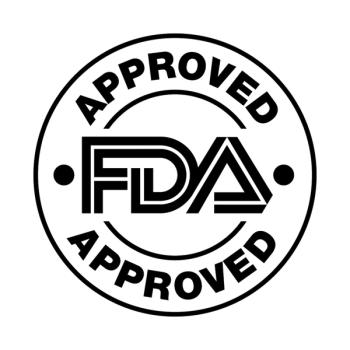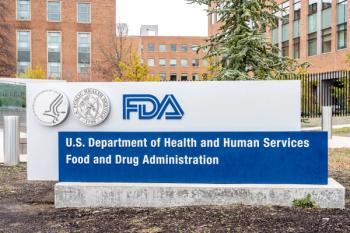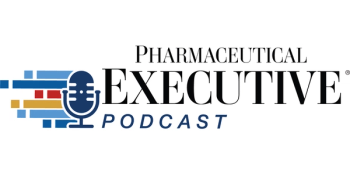
Undertreated but High-Risk: The Hidden Health Crisis Facing 50+ Americans
Leandro Boer, MD, PhD, VP, US general medicines, Amgen, explains why many high-risk Americans aged 50+ remain undertreated for cardiovascular disease, citing insurance gaps, risk misperceptions, and complex guidelines.
In an interview with Pharmaceutical Executive, Leandro Boer, MD, PhD, VP, US general medicines, Amgen, discussed the striking findings of the US arm of the VESALIUS-REAL study, presented at the recent American College of Cardiology (ACC) meeting. The observational study, which analyzed data from over 278,000 high-risk patients between 2016 and 2022, uncovered major deficiencies in lipid management following cardiovascular events such as heart attacks and strokes. The conversation shed light on why these care gaps persist, particularly among patients over 50, and highlighted the urgent need to rethink prevention strategies, streamline treatment guidelines, and increase accountability across care transitions.
Pharmaceutical Executive: Can you elaborate on why patients aged 50+ without a prior heart attack or stroke remain under treated, despite being classified as high-risk?
Leandro Boer: Actually, I like that you focused on the 50-plus age group. If you look at the study, the median age of the patient population is 67 years, but you're highlighting an earlier range—and I think that’s important. People in their 50s fall into what you could call a pre-Medicare gap. They're no longer in their 30s or 40s, when they’re more likely to have stable jobs and consistent insurance coverage. At the same time, they’re generally healthier than older adults. However, they often face job transitions or employment instability, and as a result, may lack adequate insurance. This makes them especially vulnerable.
One factor to consider is that in the United States, around 30% of the population are either uninsured or underinsured. This issue is particularly acute for those in their 50s, who may be between stable employment and not yet eligible for Medicare. Another key point is risk perception—people often don’t perceive cardiovascular risk as seriously as they do oncology risk. That difference in perception can delay both preventive care and treatment. Additionally, while diet and exercise are essential to overall health, there’s sometimes an overemphasis on lifestyle alone as a solution. These behaviors are foundational, yes, but for many at-risk individuals, they aren’t enough on their own—clinical intervention may also be needed.
There are also communication barriers. While three out of four patients trust their primary care providers (PCPs), the average appointment is only 10 to 15 minutes. That’s rarely enough time for a deep, effective conversation—especially one that conveys urgency around managing chronic risk factors. Lastly, we have to consider the complexity of clinical guidelines. There are hundreds of pages and tables, often making it difficult for even experienced providers to navigate. The more we can simplify and streamline these guidelines—particularly for PCPs who are on the front lines of care—the better equipped they’ll be to support patients in this vulnerable age group.
Taken together, these five factors—insurance gaps, misperception of risk, over-reliance on lifestyle interventions, limited clinical communication, and complex guidelines—highlight why the 50-plus cohort faces specific and serious risks.
Full Interview Summary: The VESALIUS-REAL study revealed alarming gaps in LDL-C testing and treatment among high-risk U.S. patients. Notably, 70% of patients who experienced a myocardial infarction (MI) or stroke did not begin lipid-lowering therapy afterward, and 88% failed to intensify treatment within a year. Even more concerning, 50% of these patients never had a follow-up LDL-C test, and of those tested, 82% did not achieve guideline-recommended goals. Despite the availability of proven therapies like statins, ezetimibe, and PCSK9 inhibitors, usage remains low—with only 9.8% of patients on high-intensity statins—suggesting the United States remains stuck in outdated treatment patterns.
For patients over 50 without a prior cardiovascular event, several factors contribute to under-treatment. These include being in the "pre-Medicare gap" with limited insurance, poor risk perception of cardiovascular disease compared to cancer, over-reliance on lifestyle interventions, limited time with primary care providers (PCPs), and overly complex treatment guidelines. Together, these barriers prevent effective prevention and intervention.
Findings from VESALIUS-REAL may shape future guidelines by emphasizing treatment urgency, simplifying decision-making, and streamlining guidelines—particularly for primary care. Collaborative efforts, such as Amgen’s LDL-C Action Summit and partnerships with the National Lipid Association, aim to raise awareness, improve communication, and promote treatment adherence.
Amgen is pursuing a bold ambition to cut the number of heart attacks and strokes in the US in half by 2030. The company is advancing this goal through initiatives such as free LDL-C testing in collaboration with CVS MinuteClinics, community partnerships with organizations like the Association of Black Cardiologists and the Family Heart Foundation, and the LATTICE Consortium—focused on implementation science to reduce the time from discovery to practice. These collective efforts aim to close existing care gaps and ensure more patients achieve life-saving LDL-C targets.
Newsletter
Lead with insight with the Pharmaceutical Executive newsletter, featuring strategic analysis, leadership trends, and market intelligence for biopharma decision-makers.





